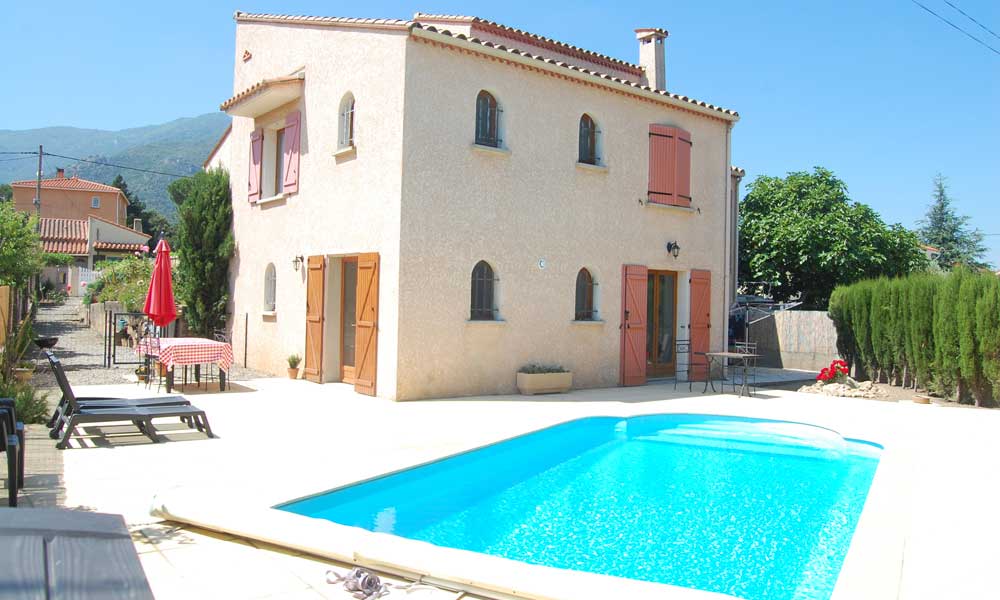This is a guest post by Dee Mason, who is discussing some of the delights the Languedoc Roussillon region has to offer. Of course I am bias with respect to the accommodation aspect and believe there is nowhere better to visit than our very own Le Moulin de l’Argentouire. But it doesn’t hurt to have another opinion occasionally; so here you go:
There are more than 740,000 acres of vineyards in the Languedoc-Rousillon region of France, which is nearly 3,000 square kilometres. It’s the busiest wine producing region in the world, producing more than a third of France’s entire annual output. Until 2001 it produced more wine than the whole of the United States of America put together and it’s responsible for most of the “wine lake”, Europe’s production glut. Dating back to the fifth century BC when the Greeks decided to plant vines in the area, the Languedoc-Rousillon part of France has a rich cultural heritage as one of the oldest wine producing areas in the country and indeed the continent. Rousillon was part of Spain until the seventeenth century and remains part of Catalonia.
One of the most famous beverages to come from Langedoc is not a wine but a vermouth. Noilly Prat has been crafted in the region for two centuries using traditional methods. A blend of picpoul and clairette grapes, Noilly Prat must be aged in oak barrels both inside and outside to ensure depth of flavour. Originally, Noilly Prat was transported on large, open, slow-sailing ships – this is the best way to simulate exposure to weather and the open waves. The end result is the rich, sherry-like vermouth we know and love. If you’re interested in the creation process, visit the Noilly Prat headquarters at 1 rue Noilly, Marseillan, where guided tours take place from May to September. The building itself has some significance architecturally – a young Gustave Eiffel (whose more famous work you may be familiar with) designed the main staircase.
Toulouse, now in Midi-Pyrénées, used to be the capital of Languedoc. If you’re in the area you should take the time to visit this settlement with its distinctive pink brick architecture and general air of grace and fortitude. Interestingly, this is the main hub of Europe’s aerospace industry. Another must-see town is Carcassonne, which is the walled city you’ll have seen photos of. Now in the Aude region technically, it’s one of those cities which looks lovely in the day but spectacular when lit up at night. Away from the towns, places like Cévennes and Lozere have some of the lowest population densities in Europe – 7.4 people per square kilometre, or 19 inhabitants per square mile.
If you’re visiting the area, one of the best ways to experience the culture is to stay in a vineyard. The whole area is dominated by vintners, vineyards, cooperatives and the wine industry in general. With such historical significance as well, it’s no surprise that staying in ancient chateaux or in the grounds of a wine producing estate will present you with a crash course in the region’s past. Most areas will have guided tours and information points to guide you around, while others might have scheduled talks and introductions into winemaking. An example of a great all-round hostelry is the Château l’Hospitalet, an ancient building about two kilometres from the coast. Its location means that the area has a heady sea breeze and because it is nestled in the protected Clape hills, the smells of orchids and herbs infuse the air and the vineyards around it.
As the name suggests, the Château l’Hospitalet used to be a hospital. Originally run my monks it now boasts restaurant and accommodation services which would be beyond the wildest dreams of the medieval inhabitants. Bicycle hire is available and Friday night is jazz night, and the sheer scale of the wine list is more awesome than any of the ski deals France has to offer.
The Domaine de Verchant is another brilliant place to stay in Languedoc. Near Montpellier, this sumptuous hotel offers more glamour than its rustic counterparts but is still right on the edge of the wine producing regions. The vineyards are a stone’s throw away, but the on-site facilities include Jacuzzis, tennis courts and an infinity pool so it might not even matter where you are.
There are probably dozens of other beautiful, well-equipped hotels for you to choose from. The Languedoc-Rousillon region is large and covers a vast range of attractions, landscapes and indeed appellations. It’s up to you where you make your base, but it’s worth hiring a car for at least one day in order to cover the whole of the area. Some hotels and chateaux offer a quaint but effective service – use of a Citroen 2CV for the day. The car will normally include a fully-packed picnic hamper, a map of the Languedoc-Rousillon region and enough room on the back seat for several cases of something tasty.

